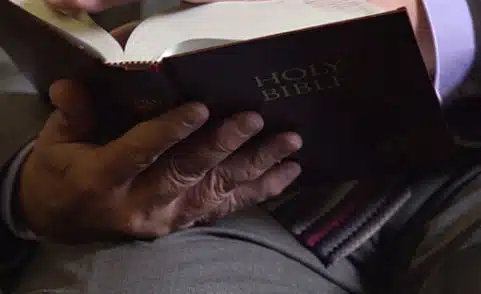
An MRI Helps Return This Pastor To His Pulpit
Posted In: MRI
Early detection is the key to saving lives. That’s the mantra Dr. Timothy Blackwelder repeats day after day to his patients. He’s a diagnostic radiologist specializing in breast cancer. RAYUS Radiology in Federal Way and Lakewood, WA is now partnering with Dr. Blackwelder’s team at the Breast Diagnostic Center to provide patients with breast MRIs.
An estimated 1 in 8 women in the United States will develop invasive breast cancer according to BreastCancer.org. For most women, mammograms are the first line of defense in the diagnosis of breast cancer. Here’s a tool from the National Cancer Institute that helps you determine your own personal risk. Women with higher risk sometimes need ultrasound or breast MRI to help with diagnosis and treatment.
If you’re scheduled for a breast MRI, your first stop is the changing room where you’ll put on a gown. At RAYUS, a female technician then helps get you situated face down on the table. Like any other MRI, this exam is motion sensitive, so you’ll have to get comfortable and then hold still for the scans. RAYUS has an 8-channel coil, which gives very highly detailed images for the radiologist to read. Think of it like this: more channels=more detail.
Randy Jorgensen, a RAYUS MRI technologist guides patients through the breast exam. “We’ll take multiple picture for typically about 25 minutes and then we’ll give you an injection and then take more pictures,” Randy explains. “We give the injection so if there’s any blood flow going to abnormal tissue in your breast, we’ll see that.” In less than an hour, the scan looks from your armpit all the way through to your chest wall for a comprehensive look at both breasts.
The results of your scan will come from your doctor, who uses the MRI images to guide decisions about surgery and treatment. Breast MRI gives high quality images and helps you get answers quickly. Dr. Blackwelder says once he looks at the images, he is armed with information his patients need. “I will spend as much time as necessary with the patient to discuss. Any question you have, we’ll answer and do our best.”
Eleven years ago, Linda Carey was diagnosed with breast cancer. After surgery, radiation, chemotherapy, and a clinical trial, doctors found more cancer in her liver. Today, her new normal includes an IV drip every 3 weeks and oral medication 7 days on and 7 days off. She’s gone through every emotion on the spectrum and says post-diagnosis, it’s important to find your own path.
“I think some people probably freak out. Some people say, ok, what am I going to do? What do I need to do?”
For Linda, one of her first steps was getting the facts, but not the gory details you can find on the internet. She put her sister in charge of research and used her as a filter for need-to-know information. Through her ongoing battle, Linda co-founded the Carey Foundation, an organization dedicated to raising money to support breast cancer patients with the incidental costs of treatment. Whether it’s transportation to and from a doctor’s appointment or providing childcare for patients during chemo, the Carey Foundation helps provide a network of support.
And it has become a personal mission of Linda’s to share what she calls her “positive approach” to cancer. Her tips include:
Always upfront about her experience, Linda doesn’t deny that the past 11 years have taken a toll. But she continues to pour her energy into the Carey Foundation, trying to make a difference for anyone fighting her fight. “I feel very fortunate that I am alive and that I do have a very full life. And if I can inspire one person who has cancer by the way I live my life, then that makes me happy.”